
Joan Mary Waller Greenwood was an English actress. Her husky voice, coupled with her slow, precise elocution, was her trademark. She played Sibella in the 1949 film Kind Hearts and Coronets, and also appeared in The Man in the White Suit (1951), Young Wives' Tale (1951), The Importance of Being Earnest (1952), Stage Struck (1958), Tom Jones (1963) and Little Dorrit (1987).

Kind Hearts and Coronets is a 1949 British crime black comedy film directed by Robert Hamer. It features Dennis Price, Joan Greenwood, Valerie Hobson and Alec Guinness; Guinness plays eight characters. The plot is loosely based on the novel Israel Rank: The Autobiography of a Criminal (1907) by Roy Horniman. It concerns Louis D'Ascoyne Mazzini, the son of a woman disowned by her aristocratic family for marrying out of her social class. After her death, a vengeful Louis decides to take the family's dukedom by murdering the eight people ahead of him in the line of succession to the title.
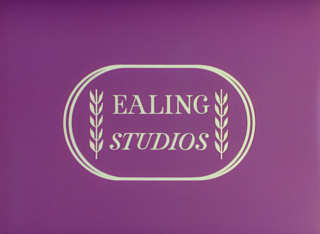
The Ealing comedies is an informal name for a series of comedy films produced by the London-based Ealing Studios during a ten-year period from 1947 to 1957. Often considered to reflect Britain's post-war spirit, the most celebrated films in the sequence include Kind Hearts and Coronets (1949), Whisky Galore! (1949), The Lavender Hill Mob (1951), The Man in the White Suit (1951) and The Ladykillers (1955). Hue and Cry (1947) is generally considered to be the earliest of the cycle, and Barnacle Bill (1957) the last, although some sources list Davy (1958) as the final Ealing comedy. Many of the Ealing comedies are ranked among the greatest British films, and they also received international acclaim.
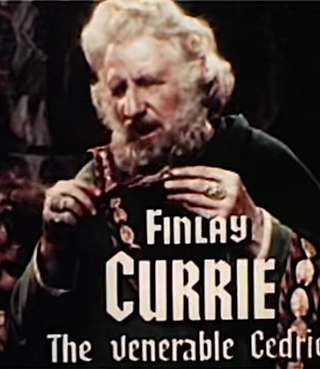
William Finlay Currie was a Scottish actor of stage, screen, and television. He received great acclaim for his roles as Abel Magwitch in the British film Great Expectations (1946) and as Balthazar in the American film Ben-Hur (1959).

The Captain's Paradise is a 1953 British comedy film produced and directed by Anthony Kimmins, and starring Alec Guinness, Yvonne De Carlo and Celia Johnson. Guinness plays the captain of a passenger ship that travels regularly between Gibraltar and Spanish Morocco. De Carlo plays his Moroccan wife and Johnson plays his British wife. The film begins at just before the end of the story, which is then told in a series of flashbacks.
Robert Hamer was a British film director and screenwriter best known for the 1949 black comedy Kind Hearts and Coronets and the now acknowledged 1947 classic It Always Rains on Sunday.
Robert Buckner was an American film screenwriter, producer and short story writer.
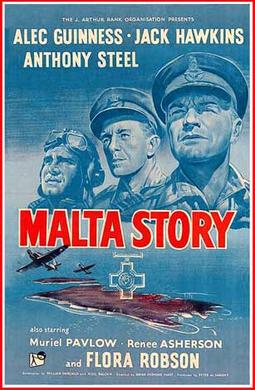
Malta Story is a 1953 British war film, directed by Brian Desmond Hurst, which is set during the air defence of Malta during the Siege of Malta in the Second World War. The film uses real and unique footage of the locations at which the battles were fought and includes a love story between a RAF reconnaissance pilot and a Maltese woman, as well as the anticipated execution of her brother, caught as an Italian spy. The pilot is loosely based on Adrian Warburton; the Maltese woman's brother is based on Carmelo Borg Pisani, who was executed in 1942.

Knights of the Round Table is a 1953 British adventure historical film made by MGM in England and Ireland. Directed by Richard Thorpe and produced by Pandro S. Berman, it was the first film in CinemaScope made by the studio. The screenplay was by Talbot Jennings, Jan Lustig and Noel Langley from Sir Thomas Malory's Le Morte d'Arthur, first published in 1485 by William Caxton.
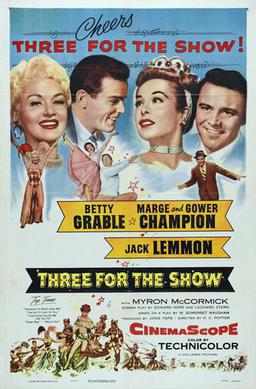
Three for the Show is a 1955 Technicolor and in CinemaScope musical comedy remake of Too Many Husbands. It stars actress Betty Grable, in her last musical, opposite Jack Lemmon, Gower Champion and Marge Champion. It is based on the 1919 play Home and Beauty by W. Somerset Maugham, which was retitled to Too Many Husbands when it came to New York.

Father Brown is a 1954 British mystery comedy film directed by Robert Hamer and starring Alec Guinness as the title character with Joan Greenwood, Peter Finch and Cecil Parker. Like the American film Father Brown, Detective (1934), it is based loosely on The Blue Cross (1910), the first Father Brown short story by G. K. Chesterton. It was shot at the Riverside Studios in London. The film's sets were designed by the art director John Hawkesworth. It was distributed by Columbia Pictures in both Britain and the United States where it was released as The Detective. It was screened at the 1954 Venice Film Festival.
Earl St. John was an American film producer in overall charge of production for The Rank Organisation at Pinewood Studios from 1950 to 1964, and was credited as executive producer on 131 films. He was known as the "Earl of Pinewood". John Davis of Rank called him "the greatest showman that The Rank Organisation has ever had, and probably the greatest showman to have lived in this country. "
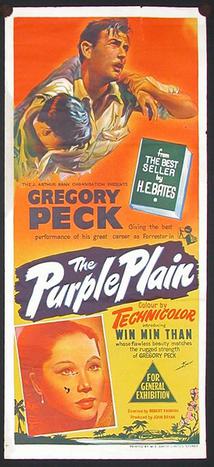
The Purple Plain is a 1954 British war film directed by Robert Parrish, with Gregory Peck playing a Royal Canadian Air Force pilot serving in the Royal Air Force in the Burma campaign in the closing months of the Second World War, who is battling with depression after having lost his wife to German bombing in London. The cast also included Win Min Than, Maurice Denham and Lyndon Brook. The film was shot at Pinewood Studios and on location in Ceylon. The film's sets were designed by the art director Jack Maxsted. It was nominated for two BAFTA awards. The film was based on the 1947 novel of the same name by H. E. Bates.

As Long as They're Happy is a 1955 British musical comedy film directed by J. Lee Thompson and starring Jack Buchanan, Susan Stephen and Diana Dors. It is based on the 1953 play of the same name by Vernon Sylvaine. It was shot in Eastmancolor at Pinewood Studios near London with sets designed by the art director Michael Stringer.

The Young Lovers is a 1954 British Cold War romantic drama film directed by Anthony Asquith and starring Odile Versois and David Knight. The film was produced by Anthony Havelock-Allan, with cinematography from Jack Asher and screenplay by George Tabori and Robin Estridge. It was shot at Pinewood Studios with sets designed by the art directors John Box and John Howell. At the 1955 British Film Academy Awards, The Young Lovers picked up the prizes for Best Screenplay and Most Promising Newcomer to Film.

Svengali is a 1954 British drama film directed by Noel Langley and starring Hildegard Knef, Donald Wolfit and Terence Morgan, based on the 1894 novel Trilby by George du Maurier. Svengali hypnotises an artist's model into becoming a great opera singer, but she struggles to escape from his powers. It was distributed in the United States by Metro-Goldwyn-Mayer.

Golden Ivory is a 1954 British adventure film shot in Kenya. It was directed by George P. Breakston and starred Robert Urquhart, John Bentley and Susan Stephen. The film was shot in Eastmancolor with prints by Technicolor. Released in colour in the United States as Outlaw Safari, it was later released as White Huntress in black and white.
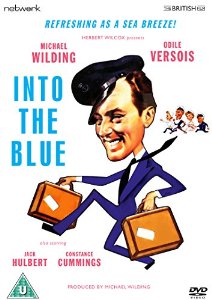
Into the Blue is a 1950 British comedy film directed by Herbert Wilcox and starring Michael Wilding, Odile Versois and Jack Hulbert. It is also known as Man in the Dinghy. In the film, a couple hire a yacht for what they hope will be a relaxing cruise to Norway, but instead become involved with smugglers and end up going up the River Seine to Paris.
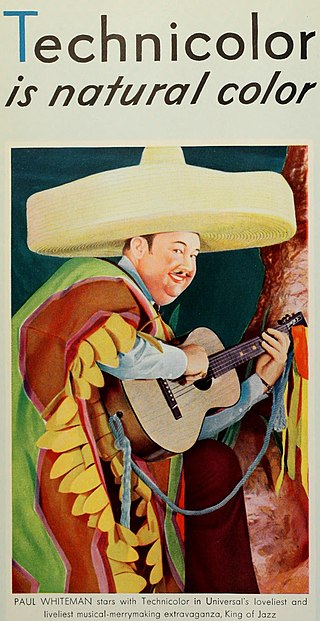
Technicolor is a series of color motion picture processes, the first version dating back to 1916, and followed by improved versions over several decades.

Foxfire is a 1955 American drama romance western film released by Universal-International, directed by Joseph Pevney, and starring Jane Russell, Jeff Chandler, and Dan Duryea. The movie was loosely based on a best-selling 1950 novel by Anya Seton.

















